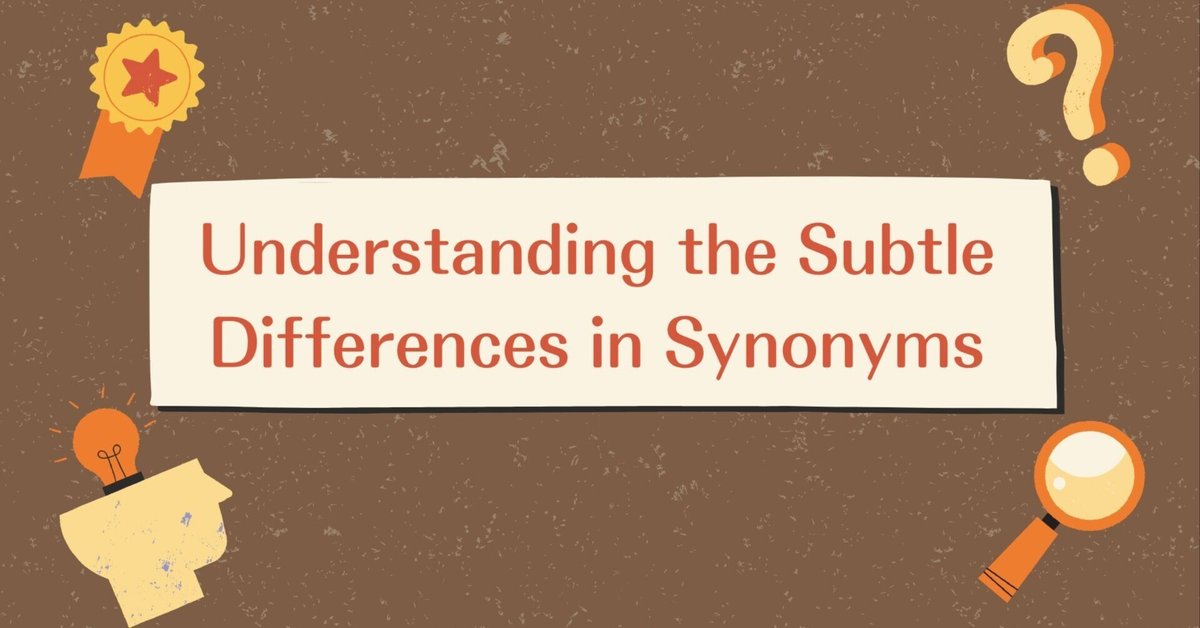
#8 Understanding the Subtle Differences in Synonyms Part3
As we reach the final part of this series, I’d like to focus on katakana words. So far, we've explored the characteristics of wago (native Japanese words) and kango (words borrowed from Chinese) under the theme of synonyms. For more details, please read the articles linked below.
Japan is truly unique in using three different writing systems: hiragana, kanji, and katakana. For instance, the word for "lunch" can be expressed in wago, kango, and katakana as "昼めし(hirumeshi)," "昼食(chuushoku)," and "ランチ(ranchi)," respectively. You might wonder why there are so many synonyms for something as simple as "lunch." As I explained in previous parts, the existence of synonyms indicates that each word carries slightly different nuances and connotations. Today, let’s delve into the nuances of katakana words and what they bring to the table!
What Exactly Are Katakana Words?
Katakana words refer to foreign loanwords, particularly those from Western countries, that are phonetically transcribed into Japanese using katakana. When Japanese people see a word written in katakana, they generally assume it’s of foreign origin.
However, not too long ago, even foreign words were often written using kanji whenever possible. In today's world, with the vast influx of foreign languages through the internet, it has become much more common to use katakana to simply capture the sounds of these words. This method has become the norm, as it’s quicker and more efficient than creating new kanji characters.
Here are some examples. On the left are foreign loanwords that were adapted into kanji by the Japanese, and on the right are the same words transcribed into katakana to capture their sounds.
煙草 (tabako) ー タバコ : tobacco
珈琲 (kōhī) ー コーヒー : coffee
硝子 (garasu) ー ガラス : glass
英吉利 (Igirisu) ー イギリス : England
和蘭陀 (Oranda) ー オランダ : Holland
While some of these kanji forms are still in use today, katakana has become the dominant way to write foreign loanwords.
Patterns in How Katakana Words Are Adopted as Loanwords
Now, when it comes to foreign loanwords, if the word already exists in Japanese with the same meaning, it typically doesn’t get turned into a katakana word. As mentioned in previous articles, it doesn’t make sense to create multiple words with identical meanings. There are, however, a few patterns and reasons behind why certain words are adopted as katakana words. Let's explore those.
Reason 1: When New Objects or Concepts Are Introduced
This occurs when entirely new terms are borrowed from abroad, rather than just creating synonyms. Examples include words like
インターネット(internet)
スマートフォン(smartphone)
フリーランス(freelance)
コンビニエンスストア (convenience store)
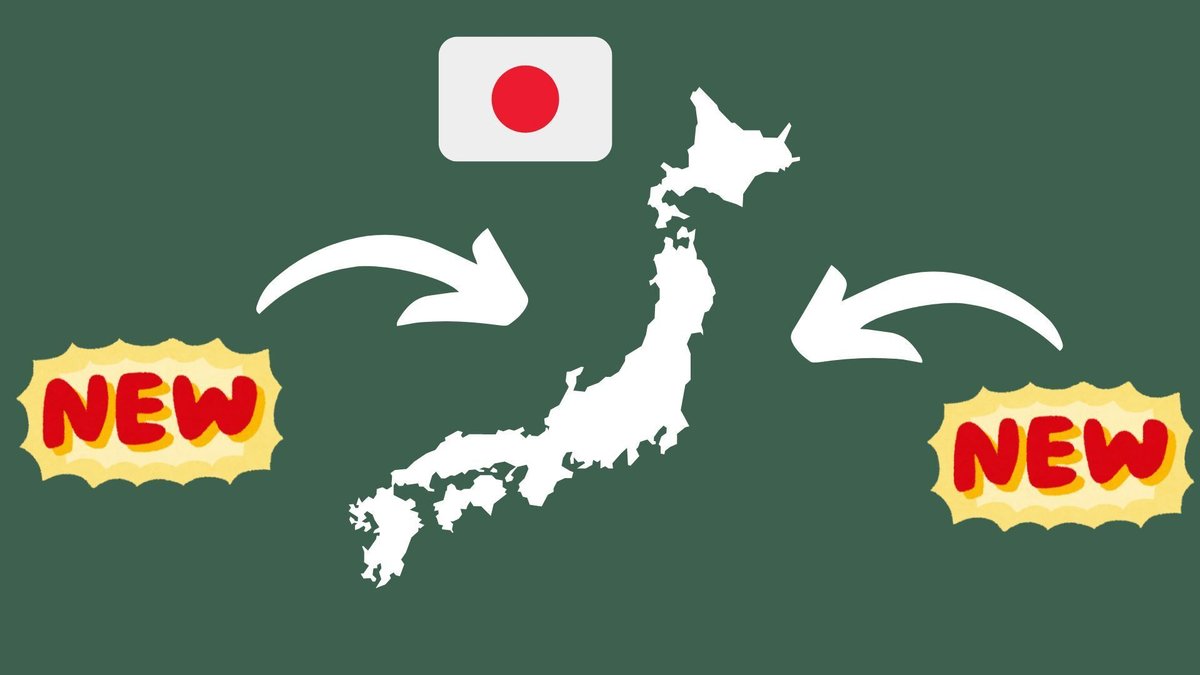
For instance, when the word "フリーランス" (freelance) was coined overseas, the concept didn’t exist in Japan. As a result, Japan’s Ministry of Economy, Trade and Industry adopted the katakana term "フリーランス" and defined it as someone who operates without a physical store or employees, often using their own experience, knowledge, and skills to earn income. While Japanese has terms like "派遣社員" (temporary employee) and "契約社員" (contract employee), these refer to workers who are employed, making them different from the concept of a freelancer.
Understanding katakana words not only gives us insights into the words themselves but also provides a glimpse into the historical and social context of the time they were adopted. It’s fascinating!
Reason 2: Emphasising Modernity with Existing Words
This next category falls under the scope of synonyms. Unlike traditional Japanese words or kanji, foreign loanwords carry a sense of modernity and novelty. By using katakana, you can make a word feel fresh, fashionable, and more attention-grabbing.
For example, consider the following katakana words alongside their Japanese equivalents:
モチベーション(Motivation) ー動機、やる気
チャレンジ(Challenge)ー挑戦
スキル(Skill)ー技術、技能
ショッピング(Shopping) ー買い物
キッチン(Kitchen)ー台所
リサイクル(Recycle)ー再利用
ドライブ(Drive)ー運転
These are all words that most Japanese people can easily translate into native Japanese or kanji, but the katakana versions give off a more stylish, fresh, and cool vibe. In contrast, the Japanese equivalents might feel a bit old-fashioned, serious, or even overly formal.
Take the word "ドライブ" as an example. While "運転" (unten) simply refers to the act of operating a vehicle, "ドライブ" (doraibu) suggests not just driving, but enjoying the journey, relaxing, or engaging in a leisure activity. So, when inviting someone on a romantic outing, try saying, 「一緒にドライブに行かない?」 ("Shall we go for a drive together?").
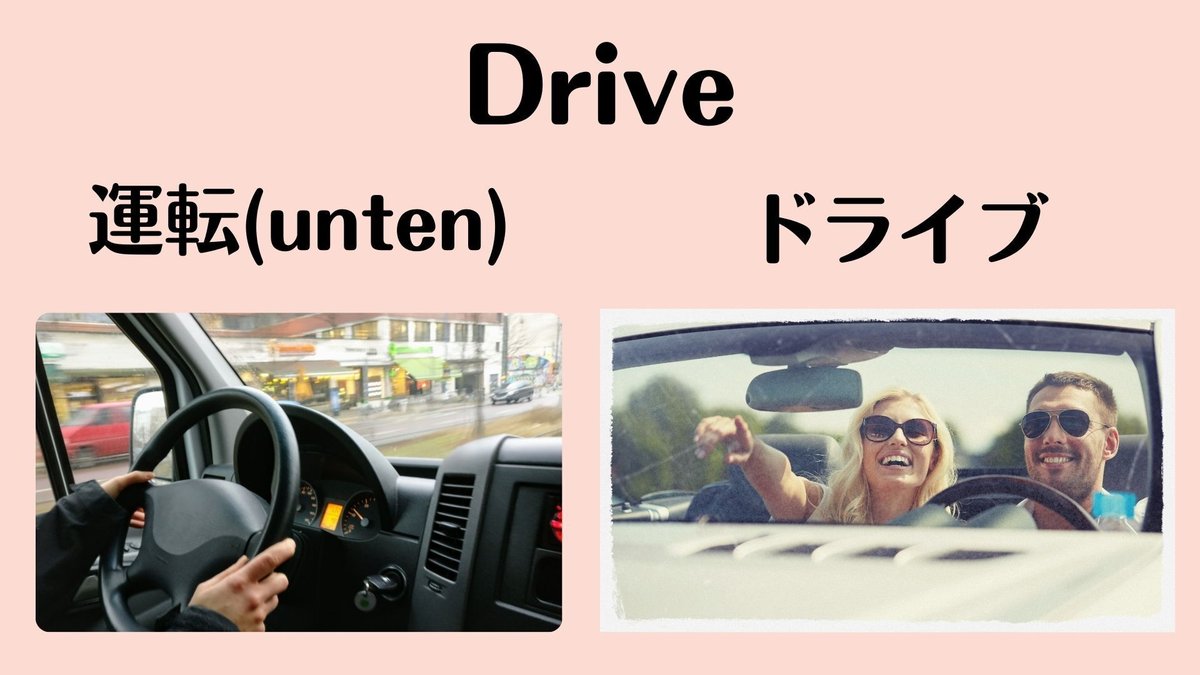
Reason 3: Differentiating a Specific Concept with Unique Usage
These are katakana words that have been adapted to convey a specific, limited meaning within a certain context. While there are words that cover the broader concept, katakana words are particularly useful when you want to focus on a specific, pinpointed aspect and differentiate it from the general concept.
For example, let’s look at some katakana words along with their meanings as used in Japan:
コンテンツ (content), referring to the substance of information or works
サポーター (supporter), typically used to describe someone who cheers for a football team
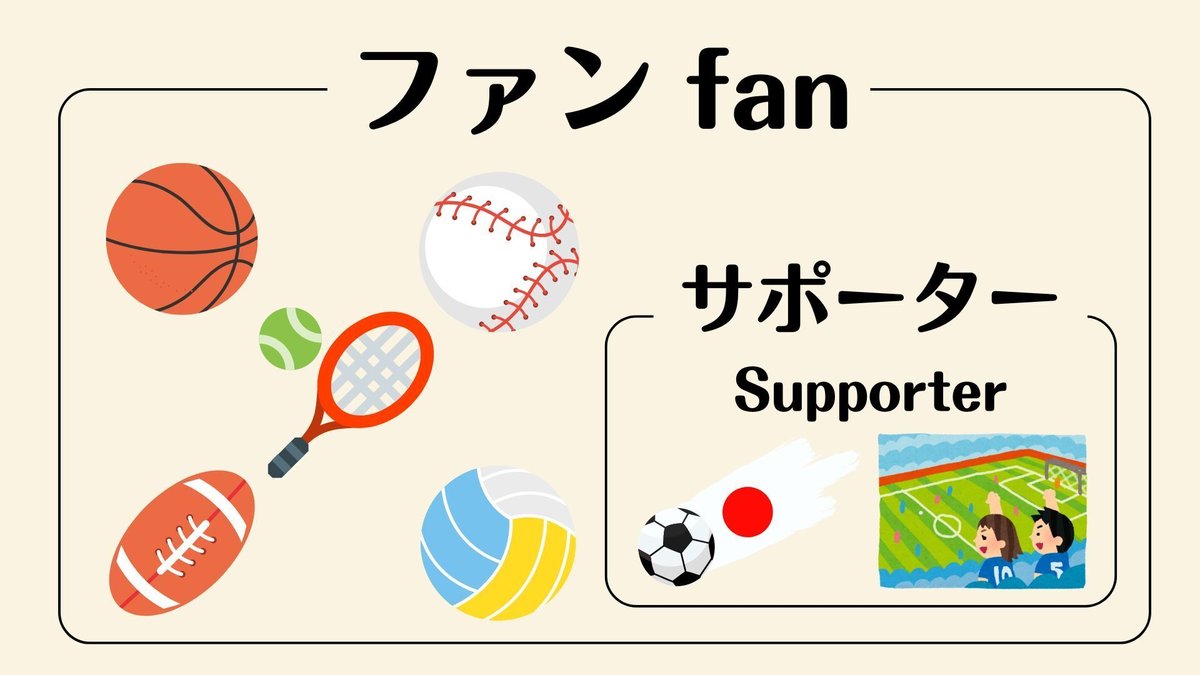
When you look at these examples, you’ll notice that there isn’t a single Japanese word that conveys exactly the same nuance. Take "コンテンツ" for instance. In English, it has a broad meaning, but in Japanese, it’s used in a more specific sense to refer to the content of information or works. You wouldn’t say "お弁当のコンテンツ" (the content of a lunchbox), but "Netflixではオリジナルコンテンツが人気です" ("Original content on Netflix is popular") is perfectly natural.
Summary
After reading Parts 1 through 3, you’ve likely gained a sense of the differences between "昼めし" (hirumeshi), "昼食" (chuushoku), and "ランチ" (ranchi). "昼めし" has a colloquial and casual feel, evoking an image of high school students cheerfully eating together in their classroom. "昼食," on the other hand, brings to mind office workers having a meal at their company cafeteria or in a restaurant. "ランチ" suggests a more elegant, stylish meal, perhaps enjoyed at a chic café on a Sunday afternoon.
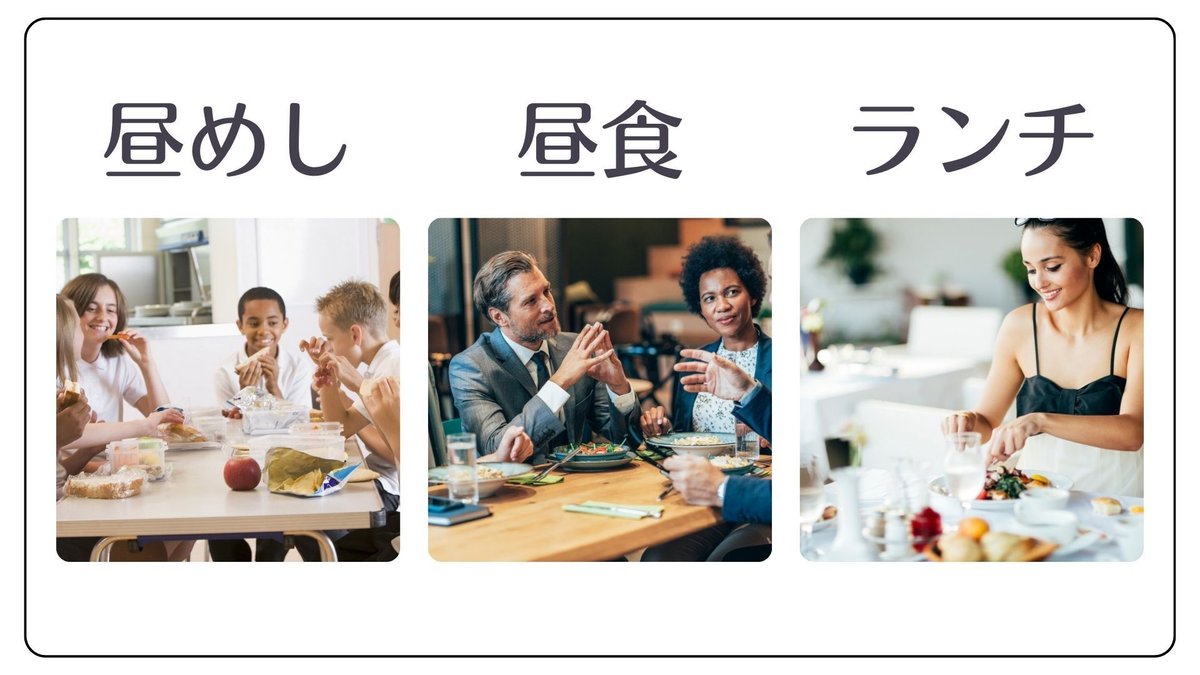
Of course, there are no strict definitions or clear boundaries, and the nuances can vary from person to person. However, I hope this rough distinction helps you understand the subtle differences. Japanese synonyms often reflect the cultural background and values of Japan, which can make them challenging for non-native speakers to grasp. But I’ll do my best to articulate these nuances as clearly as possible so that they can be better understood.
Thank you for reading!
